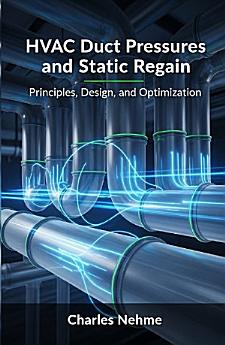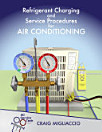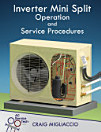HVAC Duct Pressures and Static Regain: Principles, Design, and Optimization
About this ebook
Having dedicated over three decades to navigating the complexities of HVAC and MEP systems across diverse global markets—from intricate industrial facilities to expansive commercial developments and detailed residential projects—I've witnessed firsthand the profound impact that meticulous duct design can have. My career has been a continuous journey of understanding how theoretical principles translate into practical, high-performing, and sustainable built environments. This book is a distillation of that experience, aimed at bridging the gap between fundamental aerodynamic principles and their real-world application in HVAC design.
My primary motivation in writing this guide stems from a recognition of a persistent challenge in our industry: the tendency to simplify duct design at the expense of true optimization. While various duct sizing methods exist, the often-overlooked power of static regain, when properly understood and applied, offers unparalleled opportunities for achieving balanced airflow, reducing fan energy, and ensuring quieter operations. This is not just about avoiding problems; it's about elevating HVAC systems to a higher standard of efficiency and reliability.
This book is intended for HVAC engineers, designers, consultants, and technicians—anyone involved in the design, installation, commissioning, or troubleshooting of air distribution systems. Whether you are a student just embarking on your engineering journey, a professional seeking to deepen your understanding, or an experienced practitioner looking for advanced optimization strategies, this resource aims to provide clarity, practical methodologies, and actionable insights.
We will begin by establishing a solid foundation in the basic fluid dynamics of airflow and the critical definitions of static, velocity, and total pressures. From there, we will explore various pressure loss mechanisms and delve into the comparative analysis of different duct sizing methods, with a particular emphasis on the theory and practical application of the static regain method. Subsequent sections will guide you through advanced design considerations, the crucial interaction between fans and duct systems, strategies for maximizing energy efficiency, and an overview of the latest tools, standards, and best practices.
It is my sincere hope that this book empowers you to approach HVAC duct design with greater confidence, precision, and a renewed appreciation for the elegant interplay of pressures that dictates the performance of our buildings' vital organs. By mastering these principles, you will not only enhance your projects but also contribute to a more sustainable and comfortable built world.
Charles Nehme Global HVAC and MEP Consultant
About the author
Charles Nehme is a highly respected global HVAC and MEP (Mechanical, Electrical, and Plumbing) Consultant with over 30 years of extensive international experience. His career has spanned a diverse range of applications, including complex industrial facilities, large-scale commercial developments, and intricate residential projects across various global markets.
He is a recognized authority in climate control and indoor air quality, driven by a passion for creating comfortable and efficient living spaces. Nehme's expertise encompasses designing, installing, and optimizing HVAC systems, and he is committed to staying at the forefront of industry advancements.
Beyond his consultancy work, Charles Nehme has made significant contributions to the field through numerous articles and research papers. He is also a strong advocate for sustainability and energy efficiency in HVAC solutions. Additionally, he is involved in training and mentoring the next generation of HVAC professionals, conducting workshops and seminars to share his knowledge.
His publications cover a wide array of topics within HVAC and MEP, demonstrating his profound understanding of building systems and commitment to innovative solutions. His vast expertise, honed over decades of practical application and consultancy, makes him uniquely qualified to address the critical subject of modern ventilation systems and other related engineering disciplines.








